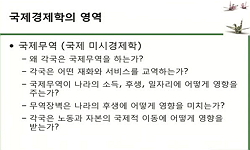This paper estimates trends in paddy land price during the past three centuries. Results from hedonic regression using more than ten thousand land price observations in different parts of Korea indicate that the real paddy land price (nominal paddy la...
http://chineseinput.net/에서 pinyin(병음)방식으로 중국어를 변환할 수 있습니다.
변환된 중국어를 복사하여 사용하시면 됩니다.
- 中文 을 입력하시려면 zhongwen을 입력하시고 space를누르시면됩니다.
- 北京 을 입력하시려면 beijing을 입력하시고 space를 누르시면 됩니다.
https://www.riss.kr/link?id=A75287673
- 저자
- 발행기관
- 학술지명
- 권호사항
-
발행연도
2004
-
작성언어
-
-
주제어
논가격 ; 논매매문기 ; 헤도닉 회귀분석 ; 이자율 ; 논생산성 ; paddy land price ; hedonic regression ; interest rate ; paddy land productivity
-
KDC
300
-
등재정보
KCI등재
-
자료형태
학술저널
- 발행기관 URL
-
수록면
123-142(20쪽)
- 제공처
- 소장기관
-
0
상세조회 -
0
다운로드
부가정보
다국어 초록 (Multilingual Abstract)
This paper estimates trends in paddy land price during the past three centuries. Results from hedonic regression using more than ten thousand land price observations in different parts of Korea indicate that the real paddy land price (nominal paddy land price as standardized by rice price) remained stable during the eighteenth century, which was followed by a falling trend in the nineteenth century. As the interest rate hardly changed during the two centuries, it follows that paddy land productivity suffered long term decline during the nineteenth century. Land price data collected by the colonial and South Korea government indicate rapidly rising real paddy land price during the twentieth century. Although the interest rate fell during the century, this accounts for only a small fraction of the rising paddy land price.
동일학술지(권/호) 다른 논문
-
- 경제사학회
- 임채성 ( Chai Sung Lim )
- 2004
- KCI등재
-
서평 : 『북조선의 군사공업화 -제국의 전쟁으로부터 김일성의 전쟁까지-』 (목촌광언,안부계사 저) 지천서관, 2003.
- 경제사학회
- 이대근
- 2004
- KCI등재
-
- 경제사학회
- 김재호 ( Jae Ho Kim )
- 2004
- KCI등재
-
- 경제사학회
- 이영훈 ( Young Hoon Rhee )
- 2004
- KCI등재





 KISS
KISS







